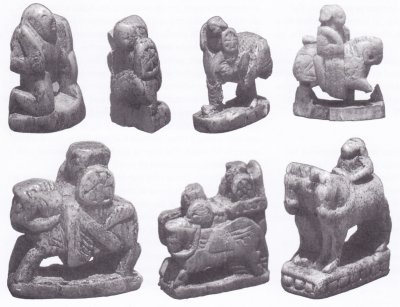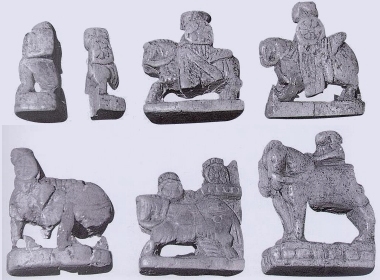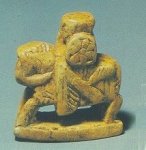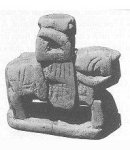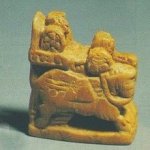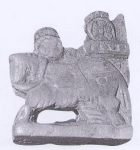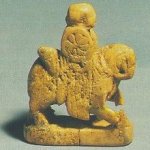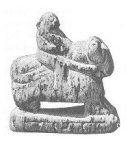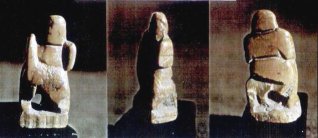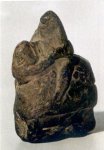The Afrasiab Chessmen
This is the earliest known Chess pieces. It was found at Afrasiab, near Samarkand, Uzbekistan by archaelogist and historian Prof. Yuriy F. Buryakov in 1977.

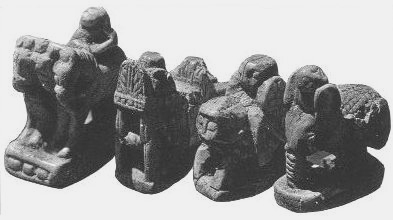
King, Chariot, Vizier, Elephant
The set is made of ivory and consists of 7 pieces. They are conserved at the State Museum of Samarkand. It is dated from 6th to 8th century. About 700 AD and before 712 AD (because a coin so dated belongs to the same layer) is the most reliable (cf G. Semenov, 2007).
Another isolated but similar Knight (in bone) had been also found in Afrasiab in the previous year (1976).
Another King (or Vizier) has also been found in Afrasiab:
The original set inludes 2 Soldiers. A third pawn has also been found in Afrasiab and drawn to my attention by Manfred Eder:
There is also another terracotta Knight which is very similar. Origin estimated from Afghanistan or Northern India, about early 6th century, so this piece is the eldest presented on this page. Kept in a private collection in Germany, its existence has been reported by Manfred Eder.
BIBLIOGRAPHY:
- (1994-Buryakov): Yuriy Buryakov, Zur Bestimmung und Datierung einiger der ältesten Schachfiguren (Der Fund von Afrasiab (Samarkand)), AntikeWelt 1 25, 1994. (with very nice photographs)
-
(Buryakov 2000): Yuriy Buryakov, Chess in Ancient Afrasiab, Journal of the Academy of Arts of Uzbekistan, San'at 4/2000.
-
(1994-Eder): Manfred Eder, Die Schachfiguren aus Afrasiab (Fragen an die Wissenschaft zur Deutung, Zeitstellung und Ikonographie), AntikeWelt 1 25, 1994. (with very nice photographs)






